


Volume 9 | Issue 3
Standford Lipsey Student Publications Building 420 Maynard St, Ann Arbor, MI 48109
MELINA SCHAEFER Editor-in-Chief
SOPHIA GAJDJIS Publisher
Creative Director SARAH ORY Marketing Director APOORVA GAUTAM
Design Editor

EMMA PETERSON
Video Editor SAM RAO
Finance Coordinators MAGGIE CLARK MAKENZIE KULCYZKI
Human Resources Coordinator MOLLY KENNEDY
Print Fashion Editors ABBY RAPOPORT ANASTASIA HERNANDO
Digital Fashion Editor MADISON PATEL
Events Coordinator SENA KADDURAH
Social Media Coordinators NEHA KOTAGIRI LAUREN ROSENBERG
Operations Director SOPHIA AFENDOULIS
Print Features Editor BROOKLYN BLEVINS
Digital Features Editor JANICE KANG
Managing Photo Editor NOLAN LOPEZ
Public Relations Coordinators IZZY SAUNDERS KALI HIGHTOWER
Digital Content Editor HELENA GROBEL Design Team
Digital Content Team
Print Photo Editors GABRIELLE MACK SAM MCLEOD
Print Beauty Editor YOUMNA KHAN
Digital Photo Editor RILEY KISSER
Street Style Editors SUREET SARAU ROSALIE COMTE
Camille Andrew, Kai Huie, Kimi Lillios, Margaret Laakso, Rino Fujimoto, Sandy Chang, Mary Wurster, Liza Miller, Hannah Salameh, Nick Pippen, Kamryn Almasy
Fashion Team
Ben Michalsky, Dhruv Verma, Gigi Kalabat, Janae Dyas, Kelsea Chen, Olivia Mouradain, Peter Marcus, Sandy Chang, Sarah Dettling, Sophia Mckay, Elissa Li, George VanHaaften, Quincy Bowles, Linsey Wozniak, Sian Tian, Skye Thompson, Mia Lolo, Ava Wadle, Quri Kim, Peyton Benjamin, Minh Phan, Dana Gray, Darnell Perkins, Angela Li
Features Team
Ava Shapiro, Hannah Triester, Nadia Judge, Neha Kotagiri, Melissa Dash, Lucy Perrone, Jayde Emery, Tiara Partsch, Meera Kumar, Amina Cattaui, Natasha Martin, Catherine August, Sailor West, Dana Gray, Lynn Dang, Shelby Jenkins
Photography Team
Pearl Thianthai, Oliver Segal, Ebba Gurney, Hannah Anderson, Paulina Rajski, Taylor Pacis, Selena Sun, Margeaux Fortin, Vera Tikhonova, Tess Crowley, Alexander Kim, Korrin Dering, Lindsey Archibald, Alex Lam, Yueshan Jiang, Sam Rao, SinYu Deng, Jessica Cho, Maggie Kirkman
Videography Team
Coco DelVecchio, Samin Hassan, Eaman Ali, Hannah Hur, Riley Kisser, Sam Rao, Gianna Galette, Olivia Ortiz
Benjamin Decker, Sonali Pai, Esther Murray, Jessica Cho, Sarafina Chea, Esther Murray, Jessica Cho
Finance Team
Elle Donakowski, Suma Moolaveesala, Manvita Battepati, Rendie Zhang, Olivia Jabari
Human Resources Team
Sarah Lindenbach, Lily Watchel, Emma Lewry, Diya Nambiar
Public Relations Team
Harini Shanker, Brandon Cole, Katherine Lambert, Devin Vowels, Ava Ben-David, Ava Ray, Samantha Wright
Events Team
Tara Nayak, Erin Segui, Shruti Patel, Tiara Blonshine, Paris Rodgers, Allie Cain, Lottie Winegarden
Social Media Team
Samedha Gorrai, Olivia Sun, Charlotte Foley, Hannah Ding, Aubrey Borschke, Camila Escobar, Ellie Ngassa, Aarya Padhye, Luiza Santos
Street Style Team
Alexa Rind, Jordyn Hardy, Jenna Frieberg, Xander Bower, Ernest Hawkes, Anika Mino cha, Ellie Ngassa, Nina Walker
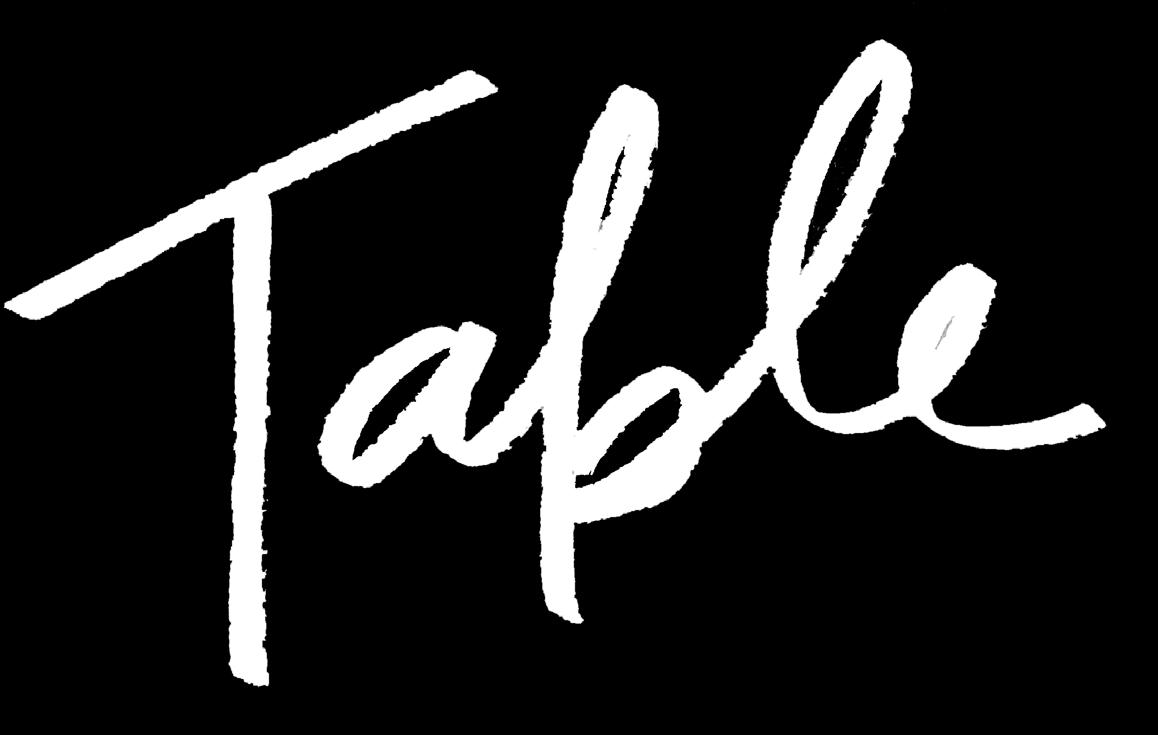


LETTER FROM THE EDITORS 04 WEAR TO WASTE 06 DREAMING IN DENIM 28 I WISH THE WORLD ENDED IN 2012 26 JEFFREY DAHMER WAS AT OUR HALLOWEEN PARTY 18 FAMILY ROOM 12 HEIRLOOM 50 LANDFILL OR LEGACY? 48 LIKE SISTER, LIKE BROTHER 36 KEEP PILE 34 PATHS DIVERGING 20 IDENTITY LINEAGE 42 LAST OF KIN 54 3
hank you/the ancestor who loved you/before she knew you/by smuggling seeds into her braid for the long/journey, who loved you/ before he knew you by putting/a walnut tree in the ground, who loved you/ before she knew you by not slaughtering/ the land.”

-Ross Gay, “The Catalogue of Unabashed Gratitude”
Ross Gay might say that a legacy is what we leave behind. The way we provide for the people who come after us. The way my grandmother’s embroidered tablecloth sits under my mother’s wedding china every thanksgiving. Others might say that legacy is preservation; it’s the past handing off something precious to the future. In this case, it’s the future’s job to wipe its sweaty hands, take a deep breath, and not drop that fragile and special thing. The way my aunt lovingly soaks that linen tablecloth in warm water the Friday after, her eyes scanning for a blemish of red wine or grease.
Yet some still might say that legacy is not beholden to the past; rather, legacy is the collection of choices we make as individuals to change, ever so slightly, the trajectory of the world around us. It’s the art we make and the conversations we have, and the values we uphold. It’s what we might be known by, after we’re gone.
As I sit in the home my family has made, in a halo of old photographs spread around me, I can’t help but think how couched our lives are in the legacy of those who came before us. So many decisions had to be made for us to find ourselves exactly where we are today. But sometimes, the nature of these decisions are not always positive. And sometimes, the legacies we carry with us to the present harm us more than they help.
In LEGACY, we explore the complicated relationship we hold to the past, and challenge the power it has to shape our future.“Last of Kin” looks at the implications of severing one’s ties with the past, and the strength and courage required to do so. “Identity Lineage” reflects on the dissonance created when personal identity bumps up against the inherited expectations of a family or culture. But as we try to embrace and escape certain legacies of the past that try to define us, we must also consider the legacies that we have the power to create in our wake. “Landfill or Legacy?” by features writer Shelby Jenkins discusses the consequences of overconsumption and how this can taint our personal legacies. Similarly, “Wear to Waste” uses mounds and mounds of clothes to physically represent the legacy of waste that is born from excess. The motion of pulling away from past legacy and pushing forward to create our own legacy creates a distinct tension: if we try so hard to escape the consequences of our ancestor’s legacies, shouldn’t we work hard to ensure our own legacies don’t function as a prison for generations to come?

The photos of my family are full of faces I don’t know and never will know. Faces smiling, faces speaking, faces eating and faces laughing. But there’s a latent power in these faces. There’s the knowledge that by some degree, I am who I am today because of who they are. And for better or for worse, I can at least thank them for allowing me the opportunity to create my own legacy, which includes this magazine. I hope you can read this and reflect on your own legacy, both the one you come from and the one you’re making along the way.
Melina Schaefer Editor-In-Chief


“T
Itype up this letter wearing an oversized crewneck sweatshirt my mom wore when she was my age, layered over a black turtleneck top thrifted from an online consignment store. Every time I pull these out of the drawer and over my head, I am reminded of where they came from, of the history, however long or short, woven into their cotton threads.
Everything has a legacy, but legacies tend to have a life of their own. Whether they were invited in or not, they take up residence in places ranging from shared dwellings like major holidays and cultural traditions to individual homes like family customs and personal habits. We find legacies in our faces and fashion, our possessions and passions, the meals and media we consume. They are ingrained in our identities, but are also lasting records of our lives and reputations. This naturally brings into question the malleability and tractability of legacies: how much of our legacies are in our own hands? When are we the fingers looping and twining the yarn into our desired patterns, and when are we merely the resulting scarf lengthening underneath the knitting needles? Or are our attempts at creating our own legacies as futile as cutting cookie dough into intricate shapes that will ultimately spread beyond recognition as they bake in the oven?
With the approach of the end of this year, we reflect on these questions and more in LEGACY. We orient ourselves in the present with feet grounded in the past and eyes turned up to the future, dipping our fingers in various paints in search of the precise hues we wish to imprint onto this world.


 Janice Kang
Janice Kang
Digital
Editor
Features
5
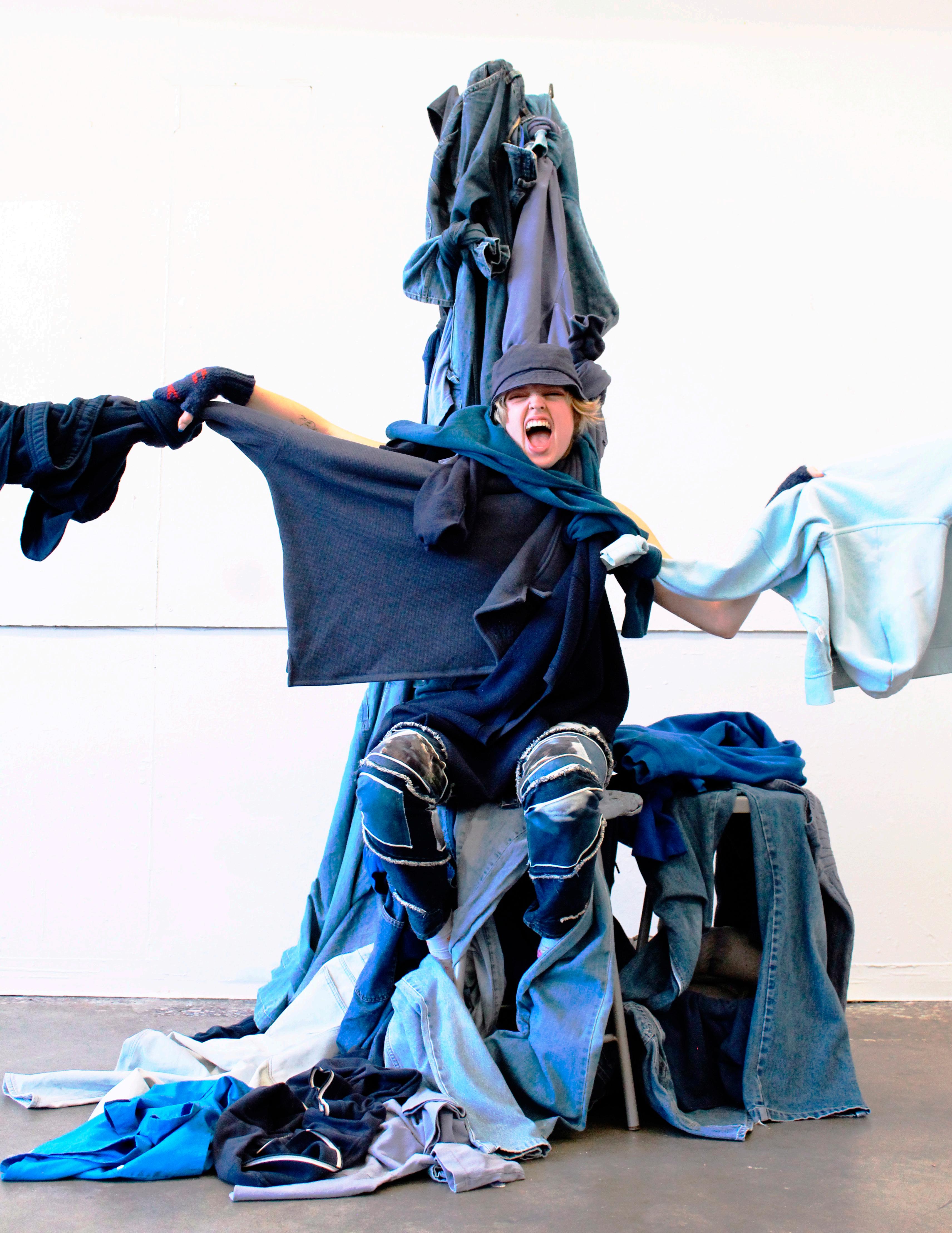
DIRECTOR
DIRECTOR
DHRUV VERMA STYLISTS
DHRUV VERMA STYLISTS
GIGI KALABAT
GIGI KALABAT GEORGE VANHAAFTEN PHOTOGRAPHERS
GEORGE VANHAAFTEN PHOTOGRAPHERS
LINDSEY ARCHIBALD OLIVER SEGAL KORRIN DERING VIDEOGRAPHERS
LINDSEY ARCHIBALD OLIVER SEGAL KORRIN DERING VIDEOGRAPHERS
SAM RAO MODEL
SAM RAO MODEL
GRACE DAVISON GRAPHIC DESIGNER SANDY CHANG
GRACE DAVISON GRAPHIC DESIGNER SANDY CHANG
WEAR T O
WEAR
T O
WASTE
WASTE


7

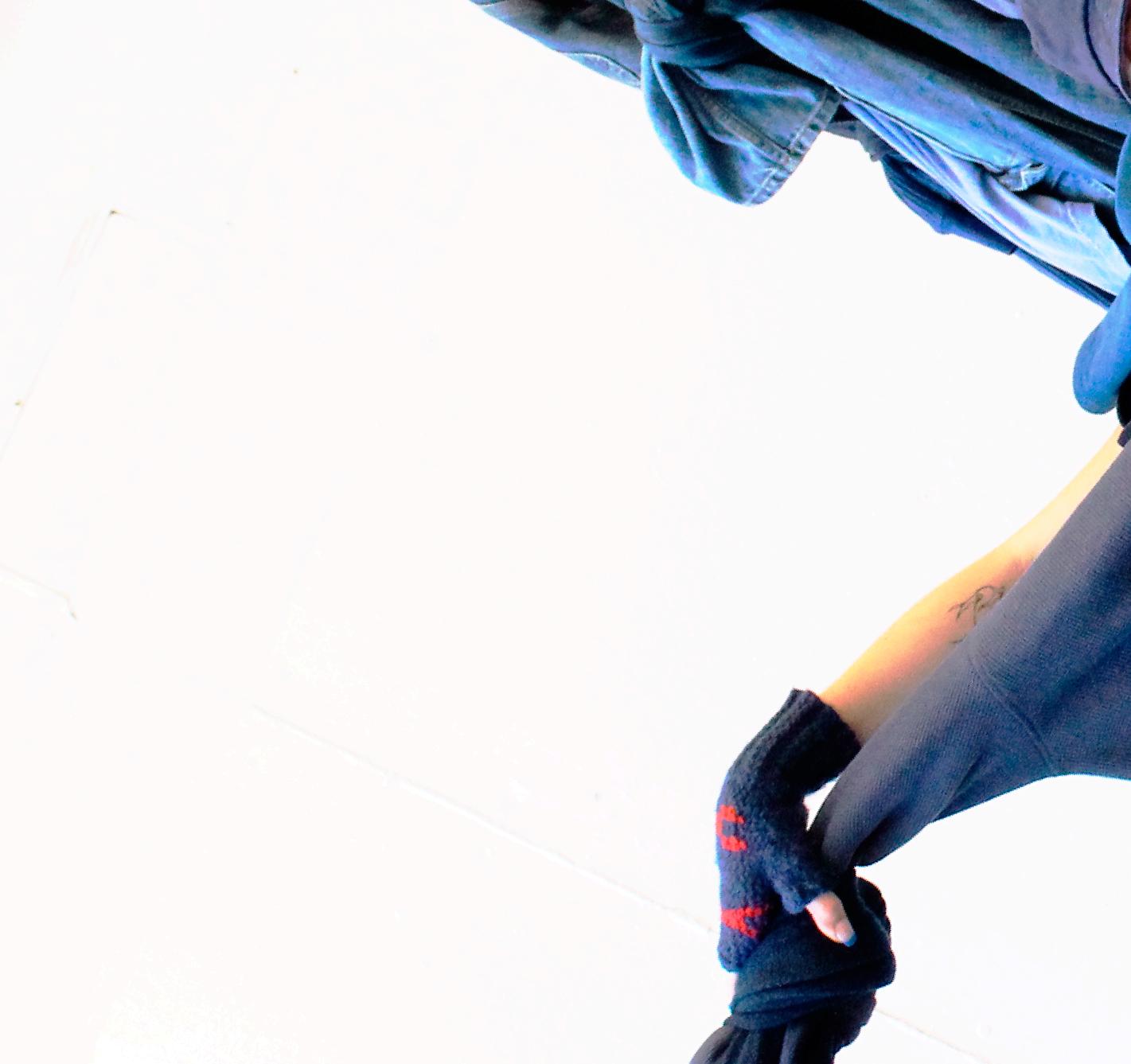



9



11



DIRECTOR SAM RAO STYLISTS MIA LOLO SANDY CHANG PHOTOGRAPHER SAM RAO PEARL THIANTHAI VIDEOGRAPHER COCO DELVECCHIO GRAPHIC DESIGNER RINO FUJIMOTO MODELS PRECIOUS WILSON MIRA NAULI CALEB WHITE JACOB COOPER 13


15



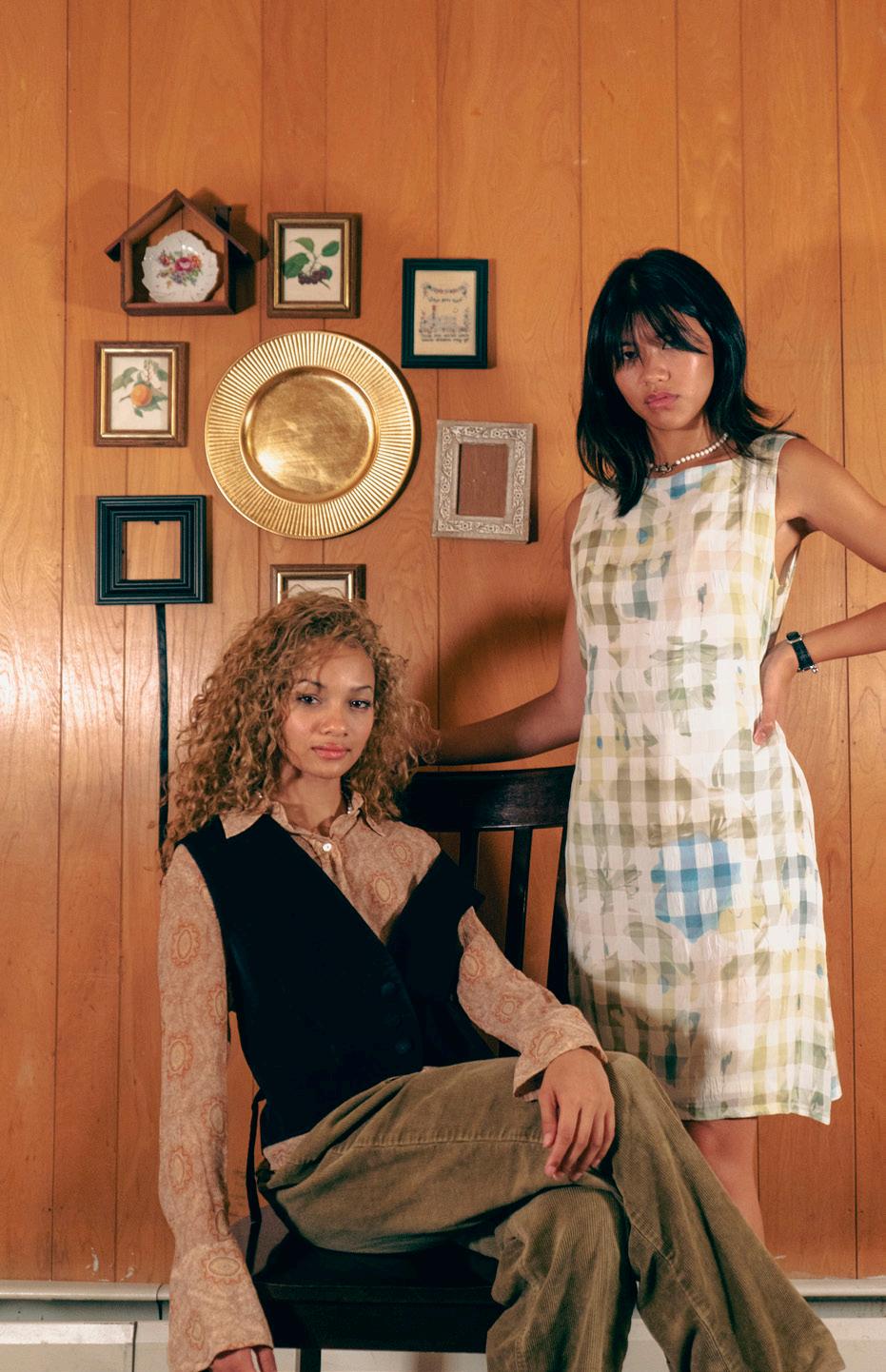

17
JEFFREY DAHMER WAS AT OUR HALLOWEEN PARTY
J
effrey Dahmer was at our Halloween party. One month after the release of Dahmer, the infamous serial killer and cannibal was slinking through my very own college campus, lurking in frat houses and local bars. Ironic, considering my disgust when watching one of the final episodes of the Netflix series, in which Dahmer receives a letter in prison from a fan whose classmates had dressed up as him for Halloween. Thirty years later, his unmistakable wire-rimmed aviator frames had become a costume party staple once again.
The resurgence of Jeffrey Dahmer in popular culture has received mixed reactions. Some feel that the series placed a sufficient focus on the seventeen victims and the system that failed them. Others find it to be overly dramatized and sympathetic toward the serial killer. It’s up for debate whose legacy is really at stake when it comes to true crime media. Does this genre truly honor the legacies of the victims, or does it instead preserve the legacy of murderers, immortalizing them for entertainment value?
Those involved in the series have insisted that Dahmer was created to give the victims a voice, not to highlight Dahmer’s story and exploit their pain. Evan Peters, who portrays Dahmer, said in a promotional video: “It’s called The Jeffrey Dahmer Story, but it’s not just him and his backstory: It’s the repercussions, it’s how society and our system failed to stop him multiple times because of racism, homophobia.”1 1 Cohen, Anne. “Something is Off in This Trailer for ‘DAHMER - Mon ster: The Jeffrey Dahmer Story,’” Netflix, September 16, 2022, https://www. netflix.com/tudum/articles/dahmer-monster-teaser-evan-peters-ryanmurphy-show.
Dahmer’s creator, Ryan Murphy, has supported this idea, saying, “It’s really about white privilege. It’s about systemic racism. It’s about homophobia.”2 Their proclaimed mission was to show viewers how racism and homophobia allowed a white killer to operate for thirteen years.
And perhaps it was critical to display the horrific evidence that backs this claim up and emphasizes the absurdity of our system’s failures. Perhaps it was not. I can’t say if there’s necessarily a step-by-step “right” way to go about the actual production of a true crime series. This genre of media is inherently triggering, heart-wrenching, and gruesome. It’s a fine line to walk, knowing when violence is there for sensationalism’s sake. I’d like to believe Dahmer’s creators made a valiant effort to be as respectful as possible while still producing a series that achieved their goal.
But when does advocacy and social criticism become merely that? When does it start to feel performative? Can the creators of Dahmer truly argue that they made the show to honor the legacies of the victims when the victims’ own families felt harmed by its release?
One major source of backlash against the series has come from family members who felt forced to relive their trauma because of it. As Eric Perry, cousin
2 Verhoeven, Beatrice. “Ryan Murphy Says He Reached Out to ‘20 of the Victims’ Family and Friends’ for ‘Dahmer’ Series: ‘Not a Single Person Responded to Us.’” The Hollywood Reporter, October 27, 2022. https://www. hollywoodreporter.com/tv/tv-news/ryan-murphy-says-he-reached-outto-20-of-the-victims-family-and-friends-for-dahmer-series-not-a-singleperson-responded-to-us-1235250610/.
WRITER JAYDE EMERY GRAPHIC DESIGNER CAMILLE ANDREW
to victim Errol Lindsey, wrote on Twitter: “My cousins wake up every few months at this point with a bunch of calls and messages and they know there’s another Dahmer show. It’s cruel.”3 What’s worse is that these calls and messages were the first time that some family members even got wind of the series.4 Many have claimed that Murphy never reached out to inform them that Dahmer was being made. It has been argued that it was unnecessary to do so as the events are public record, and Murphy has denied the claims altogether. Regardless, the fact stands that several family members of Dahmer’s victims felt personally harmed by the series.
Others, like Lindsey’s sister Rita Isbell, felt that the series was merely a way to “mak[e] money off of this tragedy.”5 Granted, Netflix and the creators of Dahmer may have no legal obligation to compensate the families, but the show itself seems to propagate a different ideology.6
There are two instances in which Dahmer favorably portrays compensation for the victims’ families. The first is the scene in which Shirley Hughes, mother to victim Anthony Hughes, is encouraged to file a civil suit against Dahmer’s father for the profits of his book regarding Jeffrey.7 Second, viewers are introduced to Joseph Zilber, who purchased and destroyed all
3 Eric Perry, Twitter post, September 2022, 11:48 PM, https://twitter. com/ericthulhu/status/1573157356728451074.
4 Perry also wrote in an earlier Tweet: “My family found out when ev eryone else did.” (Eric Perry, Twitter post, September 2022, 11:43 PM, https:// twitter.com/ericthulhu/status/1573155975795822592.)
5 Vlamis, Kelsey. “My brother was murdered by Jeffrey Dahmer. Here’s what it was like watching the Netflix show that recreated the emo tional statement I gave in court.” Insider, September 26, 2022. https://www. insider.com/rita-isbell-sister-jeffrey-dahmer-victim-talks-about-netflixshow-2022-9.
6 In the 1990s, the families of eleven of the victims filed civil suits against Dahmer, most receiving awards in the millions. But because Dahmer had no money and was serving life in prison, the families didn’t collect. If the families were to collect in the future, the money was expected to come from anything paid to Dahmer for movie or book rights. However, given that Dahmer died in prison in 1994, the possibility of receiving money from this avenue never panned out. As a result, media created post-mortem about his life and crimes continued to exploit the victims and their families’ pain, with out the families seeing a dime. (“Dahmer’s victims awarded $70 million.” UPI, August 12, 1992. https://www.upi.com/Archives/1992/08/12/Dahmers-victimsawarded-70-million/8473713592000/; “Family of Victim Files $3 Billion Suit Against Accused Serial Killer.” Deseret News, August 10, 1991. https://www.de seret.com/1991/8/10/18935330/family-of-victim-files-3-billion-suit-againstaccused-serial-killer.)
7 According to the show, the suit was reportedly settled out of court for $900,000. However, Lionel Dahmer’s book ultimately performed poorly and did not contribute to the families.
of Dahmer’s belongings from eleven of the victims’ families to ensure that Dahmer didn’t gain further publicity through an auction. Each of those families received a share of the $407,225 that Zilber paid. The show’s complimentary depictions of these scenarios lead me to believe that the show’s creators are in favor of the families receiving compensation for the violence inflicted upon their loved ones and for the exploitation of their pain. So why aren’t they putting those ideals into practice?
Creators of true crime media who truly want to honor the legacies of the victims should first be reaching out to their families, notifying them of the production, and allowing them the choice of being involved or giving their input. (And, yes, we can circle back to the debate around if this actually happened in the case of Dahmer, but I am not here to play judge to a “he said, she said” dispute.)
Second, they should be donating (and telling viewers where to donate!) to either the families or to organizations that support the groups that were harmed, while recognizing that no amount of money could ever truly be compensation for their heartache. In Dahmer’s case, that includes members of the Black, Latino, Asian, and LGBTQ+ communities. If the intention is to pay tribute to those who suffered rather than to milk their pain for a money grab, this should pose no issue.
I don’t know if there is a correct way to make true crime media, or if there’s a way to ensure that nobody has to see a person dressed up as their family member’s killer ever again. There are always going to be individuals who consume this genre and romanticize it, minimize its damage, and demand that people “learn to take a joke” when they impersonate those responsible for inflicting so much pain. But I am certain that ways exist to genuinely help those who have been harmed and honor their legacies, to go beyond advocacy and move towards action.
19
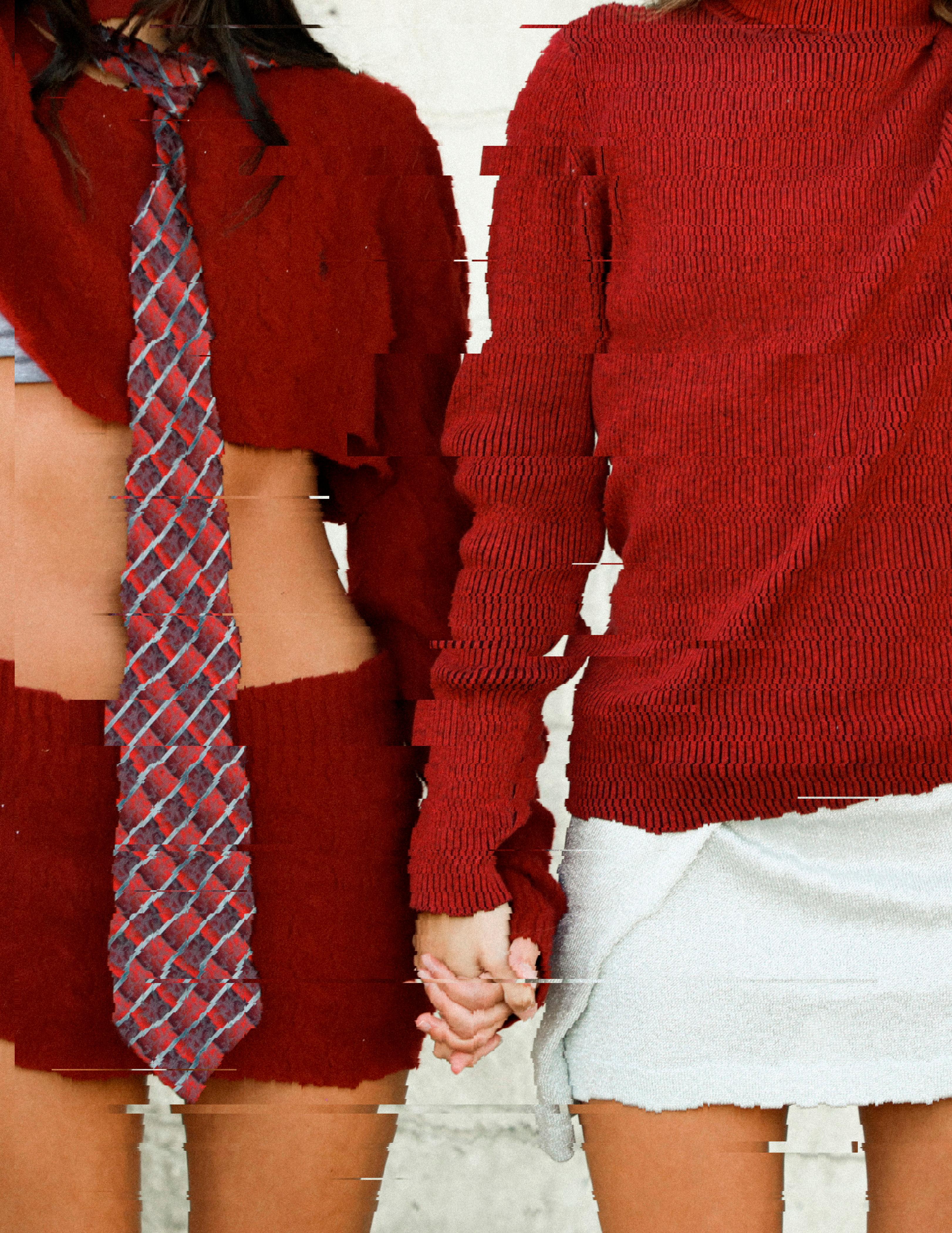










21





23







DIRECTOR JANAÉ DYAS STYLISTS KELSEA CHEN QURI KIM PHOTOGRAPHERS YUESHAN JIANG RILEY KISSER SELENA SUN VIDEOGRAPHER RILEY KISSER GRAPHIC DESIGNER KAMRYN ALMASY MODELS HALEIGH COPELAND HANNAH COPELAND 25
Picture this. The year is 2012. For many of you, that looks like an elementary school classroom filled with preteens dreading the looming threat of middle school. A year of unparalleled pop culture moments: Psy’s “Gangnam Style” replacing Carly Rae Jepsen’s “Call Me Maybe” as the number one hit, the Gale and Peeta feud erupting post the release of the Hunger Games movie, and Flappy Bird launching on the iPhone 4. My fifth-grade experience was defined by Tiger Beat posters of Justin Bieber lining my walls, leggings layered under the smallest Hollister shorts you’ve ever seen, and afternoons spent gossiping with my girls while watching the final season of Wizards of Waverly Place. But I was afraid this would all swiftly change, as the end of the world was upon us. No, not from climate change or a world war, but a scarier third thing: the Mayan doomsday. According to the Mayan calendar, the world was going to end on December 21, 2012. The resident emo boy had warned us for months. So, on the eve of the big day, my best friend Maddie and I packed our most precious belongings into a shoebox, just in case the world really did end and our cardboard box full of useless junk somehow made it out the other side for the next intelligent species to find and study. We were going to be cemented in history. I would be the next
“first human” found to be named Lucy. Included in our trunk of trinkets were our brightly colored flip phones, a dELiA*s magazine, Lip Smacker lip gloss, my favorite pair of ballet flats, last year’s yearbook, both of our diaries (cataloging all the major drama and villains of our entire grade), and the infamous “like web” meticulously detailing all of our grade’s intricately entangled romances. Naturally, fifth-grade me was unable to register the chokehold the patriarchy/ male gaze/heteronormativity (and all those other good buzzwords) had on me. Writing down all the hot gossip and judging the poor fashion choices of my male peers (muscle tanks and shark tooth necklaces) in my floral print diary was the deepest introspection I was capable of at the time. I had yet to be worn down by the incompetence of teenage boys and the horrors of teenage girlhood. I had yet to question my main character syndrome; I thought my surviving end-of-the-world belongings would be an absolute treat for the next generation to find. I was almost disappointed when the world didn’t end that night and I had to take apart the contents of our treasure chest.
The experience of curating my time capsule left me continuously thinking about what, if anything, would be left behind in an end-of-the-world scenario.
And what would these objects say about us? Now, my shoebox would contain my cracked iPhone X, a Jellycat or two, my favorite thrifted pieces, my hot pink digital camera, and a handful of depressing journals. But what would that reveal about me to the imagined next generation of life? And why do I care about how I’m perceived by others even from the grave? What have I lost by trying to make my life appealing to the imagined viewer? Being a piece of media to consume—Truman style—has been a guiding force for me since the ripe age of 11, convincing me that my crush could see me 100% of the time via hidden cameras (I can confirm from TikTok that this is not a unique experience). Now, 21-year-old me is convinced that my mental breakdowns and depressive episodes are the next hit segment on the Truman Show. I sprawl across my bed, legs dangling, eyes puffy, taking selfies in the golden hour lighting as I rot for the third consecutive day. I wear mascara so that when I cry it will smudge down my face in a hot and pretty and desirable way. And I am not alone in this. My favorite internet girl cult classic, “standing on the shoulders of complex female characters,” puts it best: “we rationalize our own suffering through the romanticization of those who have suffered before us and, in turn, we provide a blueprint for the hot-girl
suffering of those after.” So, I am in my fleabag era (derogatory)! My pain is for consumption so that I don’t have to really feel it. My unhinged, glorified diary entries are for future generations to feast their eyes on the trials and tribulations of my adolescent years. The need to create a legacy that people will want to consume and a life that constantly appeals to the imagined (almost always male) viewer has caused me one too many headaches to be worth it. “We consume so much, now, that perhaps we don’t know what it means to exist as something unsellable. I had to give up journaling because I couldn’t stop writing for the people who would read it after I was dead.” Although my fifth-grade diary was written purely for the consumption of future me and others, some of my most entertaining work is created under these conditions. The panopticon has left me constantly thinking about how I will be perceived even when I’m long gone. Maybe my legacy would have been better off ending in 2012 with the rest of my charmed adolescence. Although my diaries post childhood teeter the incredibly fine line between distressing and hilarious, that’s a legacy I’d be content leaving behind.
LUCY PERRONE GRAPHIC DESIGNER EMMA PETERSON
WRITER
DREAMING
27
DREAMING DREAMING

DREAMING IN DENIM DREAMING IN DREAMING IN DREAMING IN DREAMING IN DREAMING IN DENIM DREAMING IN DENIM DREAMING IN DENIM DREAMING IN DENIM DREAMING IN DREAMING IN
IN DENIM IN DENIM DENIM DENIM


IN DENIM IN DENIM 29

DIRECTOR MINH PHAN STYLISTS PETER MARCUS PEYTON BENJAMIN PHOTOGRAPHERS SINYU DENG NOLAN LOPEZ VIDEOGRAPHER EAMAN ALI GRAPHIC DESIGNER KAI HUIE MODELS ZELDA MAKAYLA KELLEY JADE CROSBY

31


33
WRITER
AVA SHAPIRO GRAPHIC DESIGNER MARGARET LAAKSO
A
s the last bit of summer slips away, I sit in my childhood bedroom amid mounds of clothes that I need to either bring back with me to college or get rid of. My sentimental nature makes this task difficult to stomach, but since my brother got a “grown-up job” in a big city and my parents decided that it was time to leave the home where I spent my adolescence, I know that there is no better time to sort through my belongings, and therefore, sort through the passed down clothing of my youth.
As I sift through my never-ending jean collection, I stumble upon one of my favorite pairs of what I like to call my “going out” jeans—perfect for nights filled with dancing and spilled drinks. The faded Abercrombie and Fitch label suddenly whisks me back to a time when my favorite pair of jeans were from the same brand but about 10 years older. While I don’t have this particular pair of jeans anymore, they were undoubtedly a staple piece in my wardrobe as a child. Given to me by my best friend Lexi, I wore them every chance I could. She gave me her hand-me-downs for most of our childhoods, especially since she was two years older than me and grew out of clothes more quickly than I did. While I was supplied with various Justice t-shirts, training bras, and camisoles, I was always
drawn to wearing and re-wearing those jeans, right up until they couldn’t fit me anymore. As I put my going-out jeans in my “keep” pile, I laugh at the thought that Abercrombie and Fitch have made their way back into my closet, and my heart, once more.

Since Michigan is bound to freeze into a tundra while I am back at school, I know that I need to cram as many warm and cozy clothing items as possible to fit in my car’s trunk. In going through my rather large—and, in my opinion, impressive— sweatshirt collection, I came across several high school football sweatshirts given to me by ex-boyfriends of my teenage years. One of the best parts of dating someone is stealing their clothes, right? Well, at least in high school, that was true for me. Although my relationships came and went, I always kept one thing from every one: their sweatshirts. Whether they were from their football teams or given to them for Christmas, they always ended up with me, shoved in the back of my closet until the statute of limitations after the break-up ended. Now, looking at them here, it feels like the perfect time to let the sweatshirts go, just as I had let go of their previous owners years before.
Continuing on my quest for outerwear suitable for Michigan winters, I look to

Keep
Keep Pile


my coat closet in search of a classic fall transitional jacket, a necessity for Ann Arbor’s chilly October weather. Flipping through the puffy coats and parkas, my brother’s letterman jacket catches my eye, bringing with it all of my memories from when we were in high school together. My older brother was always the most popular kid at school. He was voted “Most Outgoing” in his class, he was the captain of the basketball team, and he was class president. I spent all of my middle school and teen years looking up to him from the sidelines. Even though I sometimes felt like I was in his shadow, he always knew how to bring me out and let me stand in the light with him. One way he did this was by giving me his letterman jacket once he graduated since I didn’t have one. For my last two years of high school, I got to feel as cool as my brother every time I wore his jacket. Now, though he has since moved away and made it on his own, I still see him as the coolest kid in school, letterman jacket and all.
As I move on to my jewelry case, I find countless strings of pearls and all of my most-worn gold rings, but my favorite item is an old watch of my mom’s that she gave me. If you know my mom, you know that punctuality is not her strong suit. She can
show up to any event, dinner reservation, or appointment looking effortlessly cool and with the brightest smile on her face, but you will rarely catch her showing up until 15 minutes after the set time. That doesn’t stop her from always having a watch on her. Although she rarely uses it for its intended purpose, it sits on her wrist, serving as an accessory to her amazing outfits. I, on the other hand, can’t stand the thought of being late, constantly checking my phone for the time to ensure that I am always where I need to be at all times. Knowing this, my mom bestowed upon me her beautiful silver Michele watch that she has had since her college days. I wear this watch every day now to keep track of the time, but it also serves as a reminder of my mom’s incredible ability to be fashionably late yet always there when you need her.
With my endless amounts of clothing shoved into boxes and stuffed in the back of my car, I feel as though it is the right time for me to leave the rest of my belongings behind and head back to the place that I’ve called home for the past year. And even though I am going alone, I never feel lonely, because I carry the people that I love with me, folded and packed away for when we get there together.
35
Like Sister, Like Brother



37






SHOOT DIRECTOR MADISON PATEL STYLISTS DARNELL PERKINS PHOTOGRAPHERS UDOKA NWANSI ALEXANDER KIM VIDEOGRAPHER SAMIN HASSAN GRAPHIC DESIGNER NICK PIPPEN MODEL MADISON PATEL GRIFFIN PATEL 39




41

IDENTITY LINEAGE IDENTITY LINEAGE

43


45
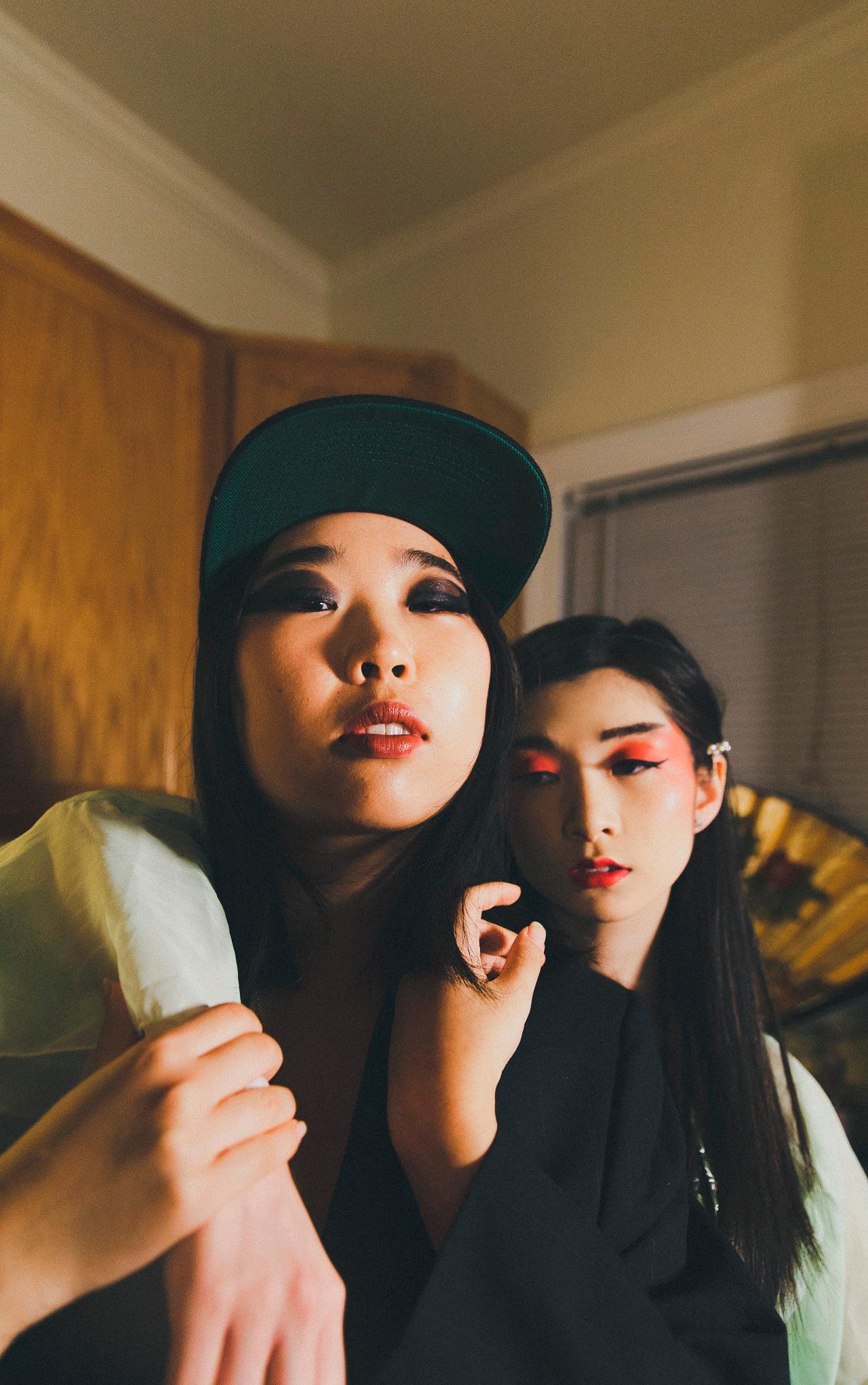 DIRECTOR ANGELLA
STYLISTS ELISSA QUINCY BOWLES PHOTOGRAPHERS
ALEX EBBA GURNEY VIDEOGRAPHER OLIVIA ORTIZ GRAPHIC DESIGNER LIZA MILLER
DIRECTOR ANGELLA
STYLISTS ELISSA QUINCY BOWLES PHOTOGRAPHERS
ALEX EBBA GURNEY VIDEOGRAPHER OLIVIA ORTIZ GRAPHIC DESIGNER LIZA MILLER
 DIRECTOR ANGELLA LI
STYLISTS ELISSA LI BOWLES PHOTOGRAPHERS
DIRECTOR ANGELLA LI
STYLISTS ELISSA LI BOWLES PHOTOGRAPHERS
47
LAM GURNEY VIDEOGRAPHER ORTIZ DESIGNER MILLER
LANDFILL OR LEGACY?
I
’d like to think my legacy is in the things I keep, but most of them belong in landfills. In seventh grade, on my best friend’s birthday, my class took a field trip to Universal Studios. I still have the bag from the Wizarding World of Harry Potter gift shop. I don’t remember what I actually bought that day, but I can picture that seemingly insignificant plastic bag with perfect clarity. I have every birthday card I have ever been given, even the cheap drugstore ones for which the corresponding birthday I cannot even remember but kept nonetheless. I think of myself as a sentimental person. I keep everything people who love me have gifted me. They thought of me and I think of them when I look back through my collection of things. I’ve never been able to bring myself to throw away the love poems my first girlfriend wrote me, though that envelope is always opened with extreme caution. I kept the t-shirts from every event, even some I didn’t attend! But I tell myself I will just add the shirt to my bin in case, one day, I actually want my grandmother to make that t-shirt quilt we’ve been talking about for ages. I won’t. I know this. The thought of cutting up any of those memories is too horrid to stomach, even to make them into something more practical. I would rather let them gather dust and laugh once a year at the idea that I used to be small enough to fit in those tiny dance recital shirts. It’s through this cotton collection, through the nameless birthday cards that I count the months and feel the years that have passed by. I have never grown an inch in my own eyes, but the sun rises and sets, and in the meantime, I’ve grown out of a youth small.
My mother says I am a hoarder. She’s kidding, kind of. I know she sees these precious mementos of mine as just things taking up space in her guest closet.
Things I will never do anything with. I know she secretly hopes one day I grow out of this phase of keeping. I do not think that will be the case. I will always be a keeper. It’s these things that remind me of the joy that once lived on my face, of the smile that left my cheeks aching. If I hold these things close enough to my skin, they can bring back that moment as if it was happening right then. They can resurface the warm feeling in my chest, and I cannot throw away that.
I have found that legacies matter less to people when we do not know where we are from. When we cannot point to a country on the globe, a place on the map, and claim that culture as ours. My dad’s mother sent me a DNA-testing kit once several years ago. Even if you asked, I still cannot recite to you my own origins. The results were unmemorable and meaningless. 23andMe cannot hand you a legacy. Supposedly, that is imparted to you through your family’s traditions, the history in their doings and behaviors.
My entire extended family is a big fan of the University of North Carolina Tar Heels because my grandfather graduated from there in some year with some degree, two details I also cannot remember for a lack of being engraved on my memory. Is that my legacy? It’s an accomplishment that doesn’t even belong to me.
But standing in that Universal Studios gift shop, sweating and exhausted next to my best friends, baking in the Florida sun with pure joy flowing through my veins is a moment that belonged only to me. And that will always feel more important to my legacy. So I kept the bag.
WRITER SHELBY JENKINS GRAPHIC DESIGNER EMMA PETERSON
49
HEIRLOOM HEIRLOOM








51




DIRECTOR LINSEY WOZNIAK STYLISTS SIAN TIAN AVA WADLE PHOTOGRAPHERS MAGGIE KIRKMAN TESS CROWLEY GRAPHIC DESIGNER KIMI LILLIOS MODEL MARIYA JAHAN 53
LAST OF KIN


55


57


59
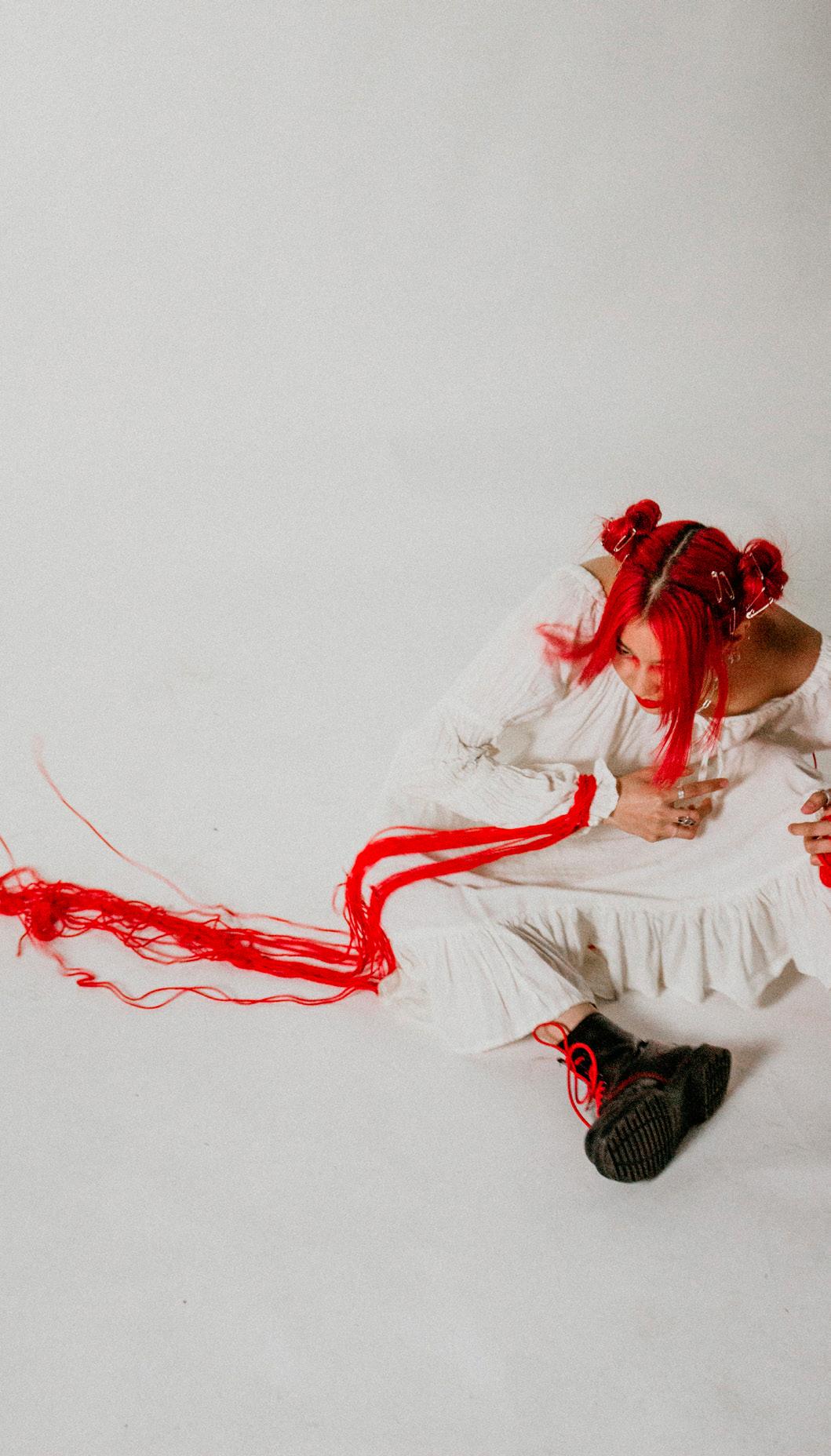
 Jewelry - Trinity Barbara [The Brand]
Jewelry - Trinity Barbara [The Brand]
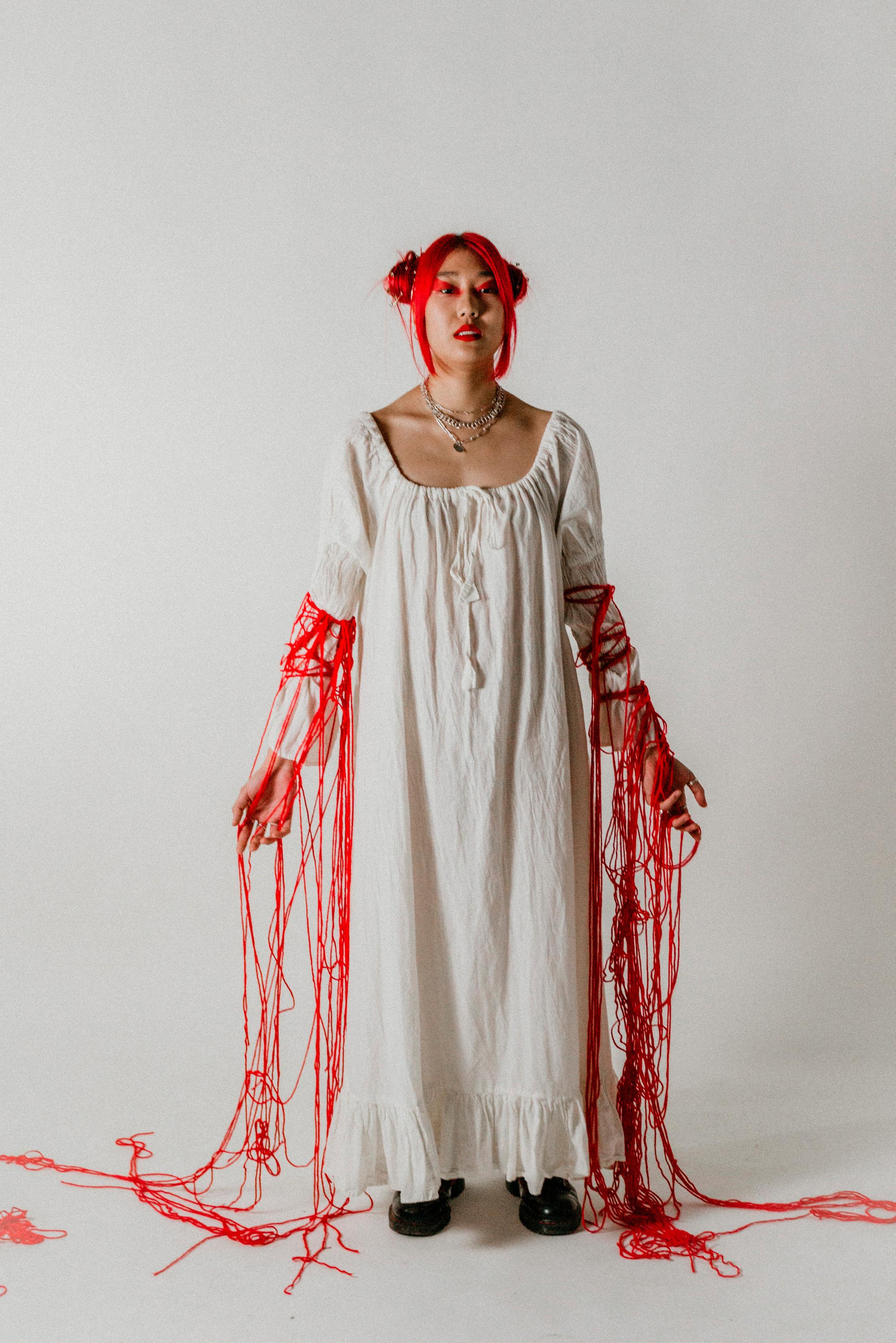
61
DIRECTOR DANA GRAY STYLISTS SKYE THOMPSON OLIVIA MOURADIAN PHOTOGRAPHERS JESSICA CHO HANNAH ANDERSON VIDEOGRAPHER GIGI GALLETTE GRAPHIC DESIGNER MARY WURSTER MODEL ELAINE CHO















 Janice Kang
Janice Kang



































































 DIRECTOR ANGELLA
STYLISTS ELISSA QUINCY BOWLES PHOTOGRAPHERS
ALEX EBBA GURNEY VIDEOGRAPHER OLIVIA ORTIZ GRAPHIC DESIGNER LIZA MILLER
DIRECTOR ANGELLA
STYLISTS ELISSA QUINCY BOWLES PHOTOGRAPHERS
ALEX EBBA GURNEY VIDEOGRAPHER OLIVIA ORTIZ GRAPHIC DESIGNER LIZA MILLER
 DIRECTOR ANGELLA LI
STYLISTS ELISSA LI BOWLES PHOTOGRAPHERS
DIRECTOR ANGELLA LI
STYLISTS ELISSA LI BOWLES PHOTOGRAPHERS



















 Jewelry - Trinity Barbara [The Brand]
Jewelry - Trinity Barbara [The Brand]



